Themed collection Most popular 2021 supramolecular chemistry articles, 2021

Designing light-driven rotary molecular motors
Various families of light-driven rotary molecular motors and the key aspects of motor design are discussed. Comparisons are made between the strengths and weaknesses of each motor. Challenges, applications, and future prospects are explored.

Chem. Sci., 2021,12, 14964-14986
https://doi.org/10.1039/D1SC04781G
Recent advances and perspectives on supramolecular radical cages
This Perspective summarizes the recent developments of supramolecular radical cages including the design and synthesis of radical cages, their interesting host–guest spin–spin interactions and applications in radical-mediated/catalyzed reactions.

Chem. Sci., 2021,12, 13648-13663
https://doi.org/10.1039/D1SC01618K
Direct air capture of CO2via crystal engineering
A perspective view of direct air capture (DAC) of CO2 and its role in mitigating climate change is presented. The article focuses on a promising approach to DAC involving crystal engineering of metal–organic and hydrogen-bonded frameworks.
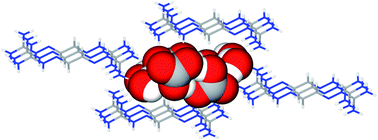
Chem. Sci., 2021,12, 12518-12528
https://doi.org/10.1039/D1SC04097A
Beyond structural motifs: the frontier of actinide-containing metal–organic frameworks
This perspective deviates from exclusively focusing on structural features of actinide-containing metal-organic frameworks and pivots towards their prospect as avant-garde materials with an emphasis on their physicochemical properties.
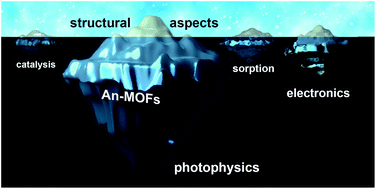
Chem. Sci., 2021,12, 7214-7230
https://doi.org/10.1039/D1SC01827B
Capture of toxic gases in MOFs: SO2, H2S, NH3 and NOx
MOFs are promising candidates for the capture of toxic gases such as SO2, H2S, NH3 and NOx. Understanding the role of different chemical functionalities, within the pores of MOFs, is the key for accomplishing superior captures of these toxic gases.

Chem. Sci., 2021,12, 6772-6799
https://doi.org/10.1039/D1SC01609A
By-design molecular architectures via alkyne metathesis
The recent synthesis of novel shape-persistent 2D and 3D molecular architectures via alkyne metathesis is reviewed and the critical role of catalysts is also highlighted.

Chem. Sci., 2021,12, 9591-9606
https://doi.org/10.1039/D1SC01881G
Increasing structural and functional complexity in self-assembled coordination cages
This review highlights recent strategies towards the rational synthesis of metallo-supramolecular multicomponent systems, the implementation of functionality and the challenge to create multifunctional assemblies in non-statistical fashion.

Chem. Sci., 2021,12, 7269-7293
https://doi.org/10.1039/D1SC01226F
Supramolecular agents for combination of photodynamic therapy and other treatments
This review provides a summary of important research progress on supramolecular systems that can be used to combine photodynamic therapy (PDT) with photothermal therapy, chemotherapy, and immunotherapy to compensate for the shortcomings of PDT.

Chem. Sci., 2021,12, 7248-7268
https://doi.org/10.1039/D1SC01125A
Advances in anion binding and sensing using luminescent lanthanide complexes
This minireview highlights advances in anion binding and sensing using luminescent lanthanide(III) complexes.
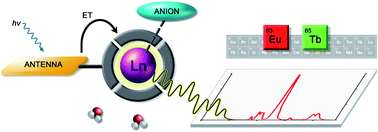
Chem. Sci., 2021,12, 2716-2734
https://doi.org/10.1039/D0SC05419D
Fluorescent supramolecular polymers of barbiturate dyes with thiophene-cored twisted π-systems
Two barbiturate dyes with regioisomeric thiophene-cored twisted π-systems show strongly enhanced emission through supramolecular polymerization. The supramolecular polymers thus formed exhibit distinct emission colors and degree of agglomeration.
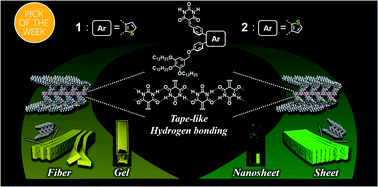
Chem. Sci., 2022,13, 1281-1287
https://doi.org/10.1039/D1SC06246H
A flavin-inspired covalent organic framework for photocatalytic alcohol oxidation
In this manuscript, we report the development of a novel alloxazine COF inspired by naturally occurring flavin cofactors for photoredox catalysis.
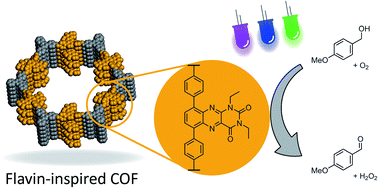
Chem. Sci., 2021,12, 15143-15150
https://doi.org/10.1039/D1SC04143F
Coordination-bond-directed synthesis of hydrogen-bonded organic frameworks from metal–organic frameworks as templates
The MOF-to-HOF transformation was realized in a single-crystal-to-single-crystal manner by the oxidation and hydration of the CuI center in CuI-TTFTB. The corbelled S⋯S and π⋯π interactions ensured the framework stability during transformation.
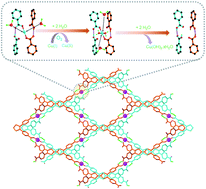
Chem. Sci., 2021,12, 14254-14259
https://doi.org/10.1039/D1SC03962H
A pillar[5]arene-based covalent organic framework with pre-encoded selective host–guest recognition
A novel pillar[5]arene-derived (P5) COF was rationally designed and synthesized, which exhibited superior performance in selective gas adsorption and paraquat binding.
![Graphical abstract: A pillar[5]arene-based covalent organic framework with pre-encoded selective host–guest recognition](/en/Image/Get?imageInfo.ImageType=GA&imageInfo.ImageIdentifier.ManuscriptID=D1SC03680G&imageInfo.ImageIdentifier.Year=2021)
Chem. Sci., 2021,12, 13316-13320
https://doi.org/10.1039/D1SC03680G
Tuning the porosity of triangular supramolecular adsorbents for superior haloalkane isomer separations
The methylene-bridged trianglamine (TA) can selectively capture 1-chlorobutane from a mixture of 1-chlorobutane and 2-chlorobutane due to the greater thermodynamic stability of the TA-based host–guest complex formed with 1-chlorobutane.
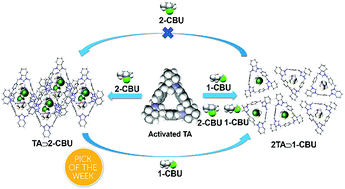
Chem. Sci., 2021,12, 12286-12291
https://doi.org/10.1039/D1SC03509F
Rigid, biconical hydrogen-bonded dimers that strongly encapsulate cationic guests in solution and the solid state
A robust, dimeric capsule forms quantitatively in low-polarity solvents via a seam of 8 hydrogen bonds. The resulting electron-rich cavity selectively binds small organic cations over neutral counterparts.
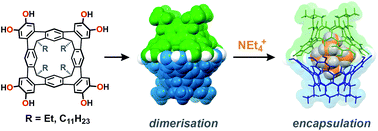
Chem. Sci., 2021,12, 11858-11863
https://doi.org/10.1039/D1SC01802G
Spontaneous and induced chiral symmetry breaking of stereolabile pillar[5]arene derivatives upon crystallisation
Stereolabile pillar[5]arene derivatives, which are dynamic racemic mixtures in solution on account of their low inversion barriers, were employed as platforms to study chiral symmetry breaking during crystallisation.
![Graphical abstract: Spontaneous and induced chiral symmetry breaking of stereolabile pillar[5]arene derivatives upon crystallisation](/en/Image/Get?imageInfo.ImageType=GA&imageInfo.ImageIdentifier.ManuscriptID=D1SC02560K&imageInfo.ImageIdentifier.Year=2021)
Chem. Sci., 2021,12, 10985-10989
https://doi.org/10.1039/D1SC02560K
Infrared crystallography for framework and linker orientation in metal–organic framework films
Polarization-dependent infrared spectroscopy of oriented metal organic framework films fills the information gap left by diffraction methods and gives access to the orientation of the aromatic linker and initial orientation of ultra-thin films.
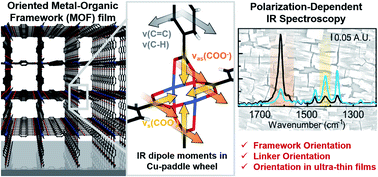
Chem. Sci., 2021,12, 9298-9308
https://doi.org/10.1039/D1SC02370E
Fluorescence detected circular dichroism (FDCD) for supramolecular host–guest complexes
Fluorescence-detected circular dichroism (FDCD) spectroscopy is applied for the first time to supramolecular host–guest and host–protein systems and compared to the more known electronic circular dichroism (ECD).
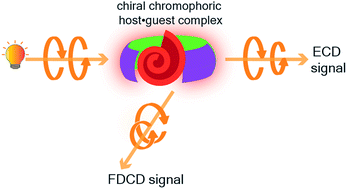
Chem. Sci., 2021,12, 9420-9431
https://doi.org/10.1039/D1SC01411K
Biocompatible metal–organic frameworks for the storage and therapeutic delivery of hydrogen sulfide
Metal–organic frameworks enable the delivery of hydrogen sulfide (H2S), an endogenous gasotransmitter with potential therapeutic value for treating disorders such as ischemia-reperfusion injury.

Chem. Sci., 2021,12, 7848-7857
https://doi.org/10.1039/D1SC00691F
Solvent-dependent fac/mer-isomerization and self-assembly of triply helical complexes bearing a pivot part
The novel tripodal complexes isomerize in response to environmental change, and well-defined self-assemblies were quantitatively produced by imine bond formation.
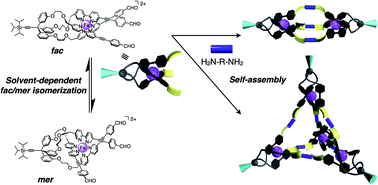
Chem. Sci., 2021,12, 7720-7726
https://doi.org/10.1039/D1SC01529J
Rational incorporation of defects within metal–organic frameworks generates highly active electrocatalytic sites
The allure of metal–organic frameworks (MOFs) in heterogeneous electrocatalysis is that catalytically active sites may be designed a priori with an unparalleled degree of control.
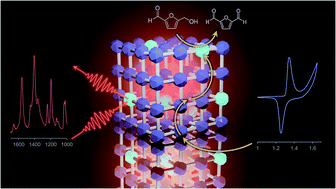
Chem. Sci., 2021,12, 7324-7333
https://doi.org/10.1039/D1SC00573A
Expanding excitation wavelengths for azobenzene photoswitching into the near-infrared range via endothermic triplet energy transfer
Triplet energy transfer enables efficient Z-to-E photoswitching of azobenzenes even with near-infrared light. Ultrafast intersystem crossing of azobenzene makes the process entropy-driven and enables the use of endothermic sensitizer-azobenzene pairs.
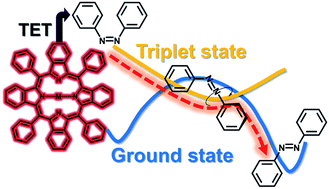
Chem. Sci., 2021,12, 7504-7509
https://doi.org/10.1039/D1SC01717A
Acid-triggered interlayer sliding of two-dimensional copper(I)–organic frameworks: more metal sites for catalysis
The addition of TFA can trigger the interlay sliding of 2D copper(I) organic frameworks prepared by combing the chemistry of MOFs and COFs. The variation of interlay stacking largely affected the porosity, chemical stability and catalytic activities.

Chem. Sci., 2021,12, 6280-6286
https://doi.org/10.1039/D1SC00924A
In vivo oral insulin delivery via covalent organic frameworks
We report the successful use of a gastro-resistant covalent organic framework for in vivo oral delivery of insulin.
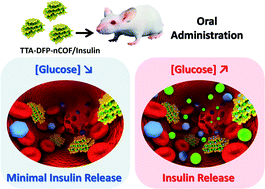
Chem. Sci., 2021,12, 6037-6047
https://doi.org/10.1039/D0SC05328G
Selective aldehyde reductions in neutral water catalysed by encapsulation in a supramolecular cage
Herein, we use a supramolecular coordination cage as a catalyst for the reduction of aldehydes to the corresponding alcohols using a weak hydride donor in neutral water, with a mode of action reminiscent of natural enzymes.
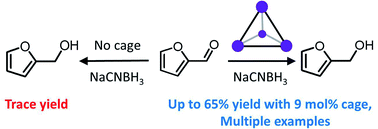
Chem. Sci., 2021,12, 5082-5090
https://doi.org/10.1039/D1SC00896J
Desymmetrised pentaporphyrinic gears mounted on metallo-organic anchors
Star-shaped cogwheel prototypes incorporating one sterically- or chemically-labelled porphyrinic paddle were designed and synthesised with the aim of achieving intermolecular gearing on surfaces.

Chem. Sci., 2021,12, 4709-4721
https://doi.org/10.1039/D0SC06379G
Translational dynamics of a non-degenerate molecular shuttle imbedded in a zirconium metal–organic framework
An unsymmetrical molecular shuttle was incorporated into the octahedral cavities of a Zr(IV) MOF. 13C SSNMR showed that the presence of mesitylene in the pores results in an increase in the barriers for the thermally driven motion of the macrocycle.

Chem. Sci., 2021,12, 3944-3951
https://doi.org/10.1039/D0SC06837C
Monolayer nanosheets formed by liquid exfoliation of charge-assisted hydrogen-bonded frameworks
We report the liquid-phase ultrasonic exfoliation of two layered hydrogen-bonded frameworks into monolayer, micron-sized, and water-stable nanosheets (HONs) connected purely by hydrogen-bonding interactions.
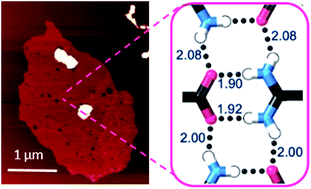
Chem. Sci., 2021,12, 3322-3327
https://doi.org/10.1039/D0SC06906J
Accurate crystal structures and chemical properties from NoSpherA2
NoSpherA2 brings quantum crystallography to routine structure determination and to the analysis of chemical properties for any class of materials.

Chem. Sci., 2021,12, 1675-1692
https://doi.org/10.1039/D0SC05526C
Cyclization of interlocked fumaramides into β-lactams: experimental and computational mechanistic assessment of the key intercomponent proton transfer and the stereocontrolling active pocket
A mechanistic study of the diastereoselective cyclization of interlocked fumaramides to give β-lactams unveils the key factors for successfully taming the process.
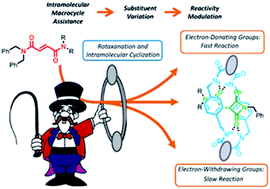
Chem. Sci., 2021,12, 747-756
https://doi.org/10.1039/D0SC05757F
About this collection
This specially curated collection pulls together some of the most popular articles from 2021 in the field of supramolecular chemistry. The collection presents some outstanding contributions to the field, ranging from the accurate prediction of crystal structures and chemical properties to designing molecular architectures through alkyne metathesis, and as with all Chemical Science articles – they are all completely free to access and read. We hope you enjoy browsing through this collection.
If a particular article has inspired you, do feel free to share on social media using the buttons on each article landing page and use our hashtag: #ChemSciMostPopular